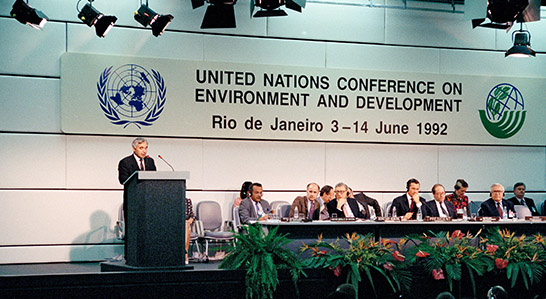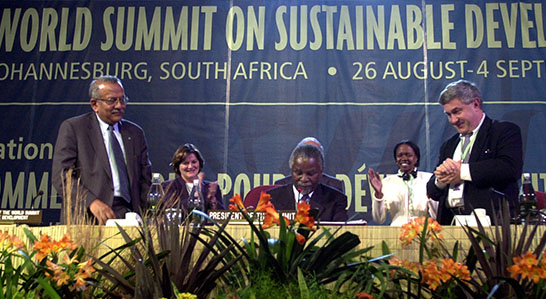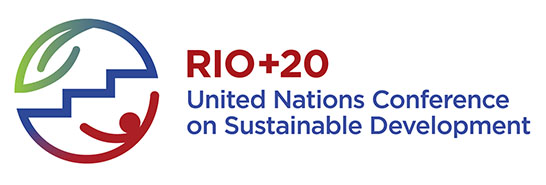|
EARTH SUMMITS ON RENEWABLE ENERGY
The first UN Conference on the Human Environment, to be named an 'Earth Summit' was the Stockholm Earth Summit in 1972. In this summit, an action plan on the educational, informational, social and cultural aspects of environmental issues was laid out. The Convention held in 1977, with the purpose of combating desertification addressed land use practices and management of dry area ecosystem, was in line with the action plan of this summit. It made an effort to check degradation of arid, semi-arid and sub-humid dry lands.

In continuation of this conference, a World Commission on Environment and Development was formed by the UN to find critical areas of environmental degradation. The Commission, led by Norway's Prime Minister, Gro Harlem Brundtland, gave a report titled Our Common Future: Report of the World Commission on Environment and Development. This report, called Brundtland Report, 1986 called for cooperative, international efforts in order to combat growing environmental problems.

The 1992 Rio Earth Summit, which was attended by 152 world leaders, produced 2 international agreements, two statements of principles and one action agenda on worldwide sustainable development. The UN Commission of Sustainable Development (CSD) was formed in December 1992 to ensure effective follow up. Conventions on biologic diversity, desertification, climate change, sustainable forestry, etc were signed.

The next UN Conference on the Human Environment, named the World Summit, at Johannesburg, in 2002 was the next Earth Summit. Called 'Rio+10', its Agenda consisted of issues like alleviating poverty, improving the abilities of poor countries to meet challenges of globalisation, promoting responsible production and consumption, ensuring access to energy sources for all people, reducing environmentally related health problems and improving access to clean water for all. The Johannesburg Summit admitted the importance of developing and disseminating innovative technologies in energy and other key sectors and agreed upon a plan to implement this.

Rio Earth Summit 2012 held from June 20th to 22nd was the last and was convened as the United Nations Conference on Sustainable Development. 172 governments participated, with 108 sending their heads of state or government. The issues addressed included systematic scrutiny of patterns of production, alternative sources of energy to replace the use of fossil fuels, reliance on public transportation systems and the growing scarcity of water. Green Cross International was founded to build upon the work of the Summit.
The Renewable Energy and Energy Efficiency Partnership (REEEP) is a Vienna-based non-profit organisation, originally launched by the government of the United Kingdom along with other partners at the Johannesburg World Summit on Sustainable Development (WSSD) in August 2002, and has since built a reputation as a small but active clean energy and development NGO. It is funded primarily by governments of Australia, Austria, Canada, Germany, Ireland, Italy, Spain, Switzerland, The Netherlands, The United Kingdom, The United States and the European Commission. Currently REEEP has 385 partners, 45 of which are governments, including all the G7 countries and key government agencies from India and China, other emerging markets and the developing world. A broad range of businesses, NGOs and civil society organisations also have become partners in this global effort for maximising usage of renewable energy.
|
|

